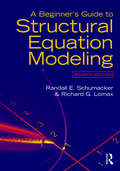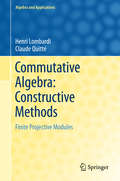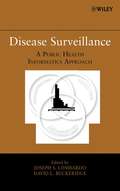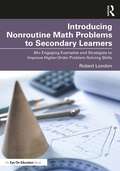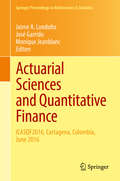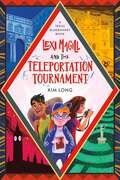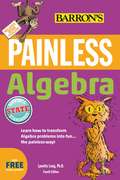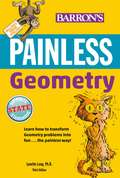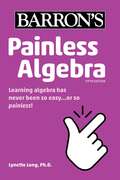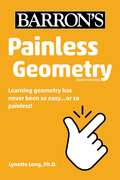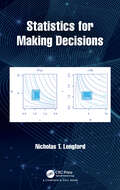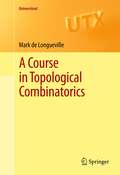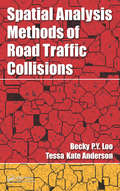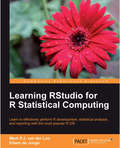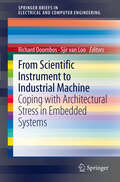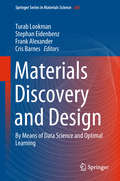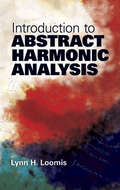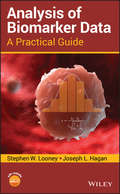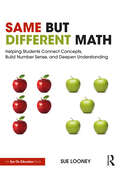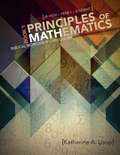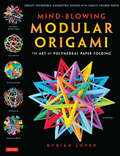- Table View
- List View
A Beginner's Guide to Structural Equation Modeling: Fourth Edition
by Richard G. Lomax Randall E. SchumackerNoted for its crystal clear explanations, this book is considered the most comprehensive introductory text to structural equation modeling (SEM). Noted for its thorough review of basic concepts and a wide variety of models, this book better prepares readers to apply SEM to a variety of research questions. Programming details and the use of algebra are kept to a minimum to help readers easily grasp the concepts so they can conduct their own analysis and critique related research. Featuring a greater emphasis on statistical power and model validation than other texts, each chapter features key concepts, examples from various disciplines, tables and figures, a summary, and exercises. Highlights of the extensively revised 4th edition include: -Uses different SEM software (not just Lisrel) including Amos, EQS, LISREL, Mplus, and R to demonstrate applications. -Detailed introduction to the statistical methods related to SEM including correlation, regression, and factor analysis to maximize understanding (Chs. 1 - 6). -The 5 step approach to modeling data (specification, identification, estimation, testing, and modification) is now covered in more detail and prior to the modeling chapters to provide a more coherent view of how to create models and interpret results (ch. 7). -More discussion of hypothesis testing, power, sampling, effect sizes, and model fit, critical topics for beginning modelers (ch. 7). - Each model chapter now focuses on one technique to enhance understanding by providing more description, assumptions, and interpretation of results, and an exercise related to analysis and output (Chs. 8 -15). -The use of SPSS AMOS diagrams to describe the theoretical models. -The key features of each of the software packages (Ch. 1). -Guidelines for reporting SEM research (Ch. 16). -www.routledge.com/9781138811935 which provides access to data sets that can be used with any program, links to other SEM examples, related readings, and journal articles, and more. Reorganized, the new edition begins with a more detailed introduction to SEM including the various software packages available, followed by chapters on data entry and editing, and correlation which is critical to understanding how missing data, non-normality, measurement, and restriction of range in scores affects SEM analysis. Multiple regression, path, and factor models are then reviewed and exploratory and confirmatory factor analysis is introduced. These chapters demonstrate how observed variables share variance in defining a latent variables and introduce how measurement error can be removed from observed variables. Chapter 7 details the 5 SEM modeling steps including model specification, identification, estimation, testing, and modification along with a discussion of hypothesis testing and the related issues of power, and sample and effect sizes.Chapters 8 to 15 provide comprehensive introductions to different SEM models including Multiple Group, Second-Order CFA, Dynamic Factor, Multiple-Indicator Multiple-Cause, Mixed Variable and Mixture, Multi-Level, Latent Growth, and SEM Interaction Models. Each of the 5 SEM modeling steps is explained for each model along with an application. Chapter exercises provide practice with and enhance understanding of the analysis of each model. The book concludes with a review of SEM guidelines for reporting research. Designed for introductory graduate courses in structural equation modeling, factor analysis, advanced, multivariate, or applied statistics, quantitative techniques, or statistics II taught in psychology, education, business, and the social and healthcare sciences, this practical book also appeals to researchers in these disciplines. Prerequisites include an introduction to intermediate statistics that covers correlation and regression principles.
Commutative Algebra: Finite Projective Modules (Algebra and Applications #20)
by Henri Lombardi Claude QuittéTranslated from the popular French edition, this book offers a detailed introduction to various basic concepts, methods, principles, and results of commutative algebra. It takes a constructive viewpoint in commutative algebra and studies algorithmic approaches alongside several abstract classical theories. Indeed, it revisits these traditional topics with a new and simplifying manner, making the subject both accessible and innovative. The algorithmic aspects of such naturally abstract topics as Galois theory, Dedekind rings, Prüfer rings, finitely generated projective modules, dimension theory of commutative rings, and others in the current treatise, are all analysed in the spirit of the great developers of constructive algebra in the nineteenth century. This updated and revised edition contains over 350 well-arranged exercises, together with their helpful hints for solution. A basic knowledge of linear algebra, group theory, elementary number theory as well as the fundamentals of ring and module theory is required. Commutative Algebra: Constructive Methods will be useful for graduate students, and also researchers, instructors and theoretical computer scientists.
Disease Surveillance: A Public Health Informatics Approach
by Joseph S. Lombardo David L. BuckeridgeAn up-to-date and comprehensive treatment of biosurveillance techniques With the worldwide awareness of bioterrorism and drug-resistant infectious diseases, the need for surveillance systems to accurately detect emerging epidemicsis essential for maintaining global safety. Responding to these issues, Disease Surveillance brings together fifteen eminent researchers in the fields of medicine, epidemiology, biostatistics, and medical informatics to define the necessary elements of an effective disease surveillance program, including research, development, implementation, and operations. The surveillance systems and techniques presented in the text are designed to best utilize modern technology, manage emerging public health threats, and adapt to environmental changes. Following a historical overview detailing the need for disease surveillance systems, the text is divided into the following three parts: Part One sets forth the informatics knowledge needed to implement a disease surveillance system, including a discussion of data sources currently used in syndromic surveillance systems. Part Two provides case studies of modern disease surveillance systems, including cases that highlight implementation and operational difficulties as well as the successes experienced by health departments in the United States, Canada, Europe, and Asia. Part Three addresses practical issues concerning the evaluation of disease surveillance systems and the education of future informatics and disease surveillance practitioners. It also assesses how future technology will shape the field of disease surveillance. This book's multidisciplinary approach is ideal for public health professionals who need to understand all the facets within a disease surveillance program and implement the technology needed to support surveillance activities. An outline of the components needed for a successful disease surveillance system combined with extensive use of case studies makes this book well-suited as a textbook for public health informatics courses
Introducing Nonroutine Math Problems to Secondary Learners: 60+ Engaging Examples and Strategies to Improve Higher-Order Problem-Solving Skills
by Robert LondonOffering secondary math educators an innovative holistic and process-orientated approach for implementing nonroutine problems into their curriculum, this book defines and establishes practical strategies to develop students’ problem-solving skills. The text focuses on the process skills necessary to solve nonroutine problems in mathematics and other subjects, with the goal of making students better problem-solvers both in and outside of the classroom. Chapters present and define a curriculum of over 60 nonroutine problems in mathematics and other content areas, and explore the pedagogy to implement this type of curriculum consistent with the NCTM Standards and Principles to Action. Four different models of implementation are discussed, alongside a structured approach through seven difficulty levels (with examples), to ensure that every student, independent of their mastery of mathematics content, can improve their ability to solve nonroutine problems. It emphasizes to students how to transfer their problem-solving skills to other real-world areas, including increasing ecological awareness, appreciating diversity and addressing significant and meaningful problems in their life, school and community. The curriculum introduced in this book can be included as a component of a traditional four-year academic high school curriculum aligned with the Common Core Mathematical Practices, or as part of a one-year isolated required or elective mathematics course. Based on extensive field-testing this approach has been effective in both traditional mathematics courses and math electives such as a course in Problem-Solving. This book provides the necessary guidance to allow each mathematics teacher to effectively integrate the approach in their classrooms. This book is ideal for secondary mathematics teachers of all levels, as well as teachers of mathematics electives.
Actuarial Sciences and Quantitative Finance: ICASQF2016, Cartagena, Colombia, June 2016 (Springer Proceedings in Mathematics & Statistics #214)
by Jaime A. Londoño José Garrido Monique JeanblancDeveloped from the Second International Congress on Actuarial Science and Quantitative Finance, this volume showcases the latest progress in all theoretical and empirical aspects of actuarial science and quantitative finance. Held at the Universidad de Cartagena in Cartegena, Colombia in June 2016, the conference emphasized relations between industry and academia and provided a platform for practitioners to discuss problems arising from the financial and insurance industries in the Andean and Caribbean regions. Based on invited lectures as well as carefully selected papers, these proceedings address topics such as statistical techniques in finance and actuarial science, portfolio management, risk theory, derivative valuation and economics of insurance.
Lexi Magill and the Teleportation Tournament
by Kim LongFor fans of The Amazing Race, Lexi Magill and the Teleportation Tournament is the perfect adventure for middle grade readers who like scavenger hunts and puzzle-solving.Twelve-year-old physics whiz Lexi Magill won't let anything stop her from winning Wisconsin's Teleportation Tournament--the annual competition where teams teleport around the world to solve science-based puzzles. She needs the prize money if she wants to re-enroll in the science academy her parents can no longer afford. Added bonus: she'll be able to reconnect with her best friend Haley.But Lexi's two teammates put a wrench in her plans. When one misreads a clue that lands the team in a castle in Germany, and the other loses her teleportation medallion in Poland, Lexi wonders what she's gotten herself into. Struggling to keep her team under control as the race rages on, Lexi not only has to figure out how to get back on course (literally), but she must decide how far she's willing to go to win, and who her real friends are. With riddles to solve and messages to decode, this interactive read won't disappoint!
Acquisition and Analysis of Terrestrial Gravity Data
by Leland Timothy Long Ronald Douglas KaufmannGravity surveys have a huge range of applications, indicating density variations in the subsurface and identifying man-made structures, local changes of rock type or even deep-seated structures at the crust/mantle boundary. This important one-stop book combines an introductory manual of practical procedures with a full explanation of analysis techniques, enabling students, geophysicists, geologists and engineers to understand the methodology, applications and limitations of a gravity survey. Filled with examples from a wide variety of acquisition problems, the book instructs students in avoiding common mistakes and misconceptions. It explores the increasing near-surface geophysical applications being opened up by improvements in instrumentation and provides more advance-level material as a useful introduction to potential theory. This is a key text for graduate students of geophysics and for professionals using gravity surveys, from civil engineers and archaeologists to oil and mineral prospectors and geophysicists seeking to learn more about the Earth's deep interior.
Painless Algebra (Painless Series)
by Lynette LongDefines algebraic terms, shows how to avoid pitfalls in calculation, presents painless methods for understanding and graphing equations, and makes problem-solving fun. Titles in Barron's extensive Painless Series cover a wide range of subjects, as they are taught at middle school and high school levels. Perfect for supporting Common Core Standards, these books are written for students who find the subjects somewhat confusing, or just need a little extra help. Most of these books take a lighthearted, humorous approach to their subjects, and offer fun exercises including puzzles, games, and challenging "Brain Tickler" problems to solve. Bonus Online Component: includes additional games to challenge students, including Beat the Clock, a line match game, and a word scramble.
Painless Geometry (Painless Series)
by Lynette LongThe thought of solving theorems or postulates leaves some students quivering in their boots. . . but not anymore! <P><P>This must-have guide takes the pain out of learning geometry once and for all. The author demonstrates how solving geometric problems amounts to fitting parts together to solve interesting puzzles. <P><P>Students discover relationships that exist between parallel and perpendicular lines; analyze the characteristics of distinct shapes such as circles, quadrilaterals, and triangles; and learn how geometric principles can solve real-world problems. <P><P>Like all titles in Barron's Painless Series, this book presents informal, student-friendly approaches to learning geometry, emphasizing interesting details, outlining potential pitfalls step by step, offering "Brain Tickler" quizzes, and more.
Painless Algebra (Barron's Painless)
by Lynette Long Ph.D.Barron's makes learning Algebra fun and PAINLESS!Painless Algebra provides lighthearted, step-by-step learning and includes:The many ways that Algebra can help you figure out practical problems in everyday lifePainless methods for understanding and graphing equations>Painless tips, common pitfalls, instructive tables, diagrams, &“brain tickler&” quizzes and answers throughout each chapter, and more.
Painless Geometry (Barron's Painless)
by Lynette Long Ph.D.Barron's makes learning Geometry fun and PAINLESS!Painless Geometry provides lighthearted, step-by-step learning and includes:Characteristics of distinct shapes, such as circles, quadrilaterals, and trianglesDiscussion on how geometric principles can solve real-world problemsPainless tips, common pitfalls, instructive tables, diagrams, &“brain tickler&” quizzes and answers throughout each chapter, and more.
Theoretical Concepts in Physics
by Malcolm S. LongairThis second edition of a popular text demonstrates how physics can be appreciated through a series of case studies spanning a complete university physics course. Highlights include three new chapters on Newton's laws (one on ancient astronomy up to the time of Galileo, one on Galileo, and one on Newton); a new chapter on dimensional methods, chaos and self-organized criticality; and a new chapter on the technology of cosmology. Although all the arguments are presented precisely in physical and mathematical terminology, the book is written in a relatively non-technical manner, intended to convey a deep understanding and appreciation of the incredible achievements of theorists in creating the structure of modern physics. First Edition Hb (1984): 0-521-25550-3 First Edition Pb (1984): 0-521-27553-9
Statistics for Making Decisions
by Nicholas T. LongfordMaking decisions is a ubiquitous mental activity in our private and professional or public lives. It entails choosing one course of action from an available shortlist of options. Statistics for Making Decisions places decision making at the centre of statistical inference, proposing its theory as a new paradigm for statistical practice. The analysis in this paradigm is earnest about prior information and the consequences of the various kinds of errors that may be committed. Its conclusion is a course of action tailored to the perspective of the specific client or sponsor of the analysis. The author’s intention is a wholesale replacement of hypothesis testing, indicting it with the argument that it has no means of incorporating the consequences of errors which self-evidently matter to the client. The volume appeals to the analyst who deals with the simplest statistical problems of comparing two samples (which one has a greater mean or variance), or deciding whether a parameter is positive or negative. It combines highlighting the deficiencies of hypothesis testing with promoting a principled solution based on the idea of a currency for error, of which we want to spend as little as possible. This is implemented by selecting the option for which the expected loss is smallest (the Bayes rule). The price to pay is the need for a more detailed description of the options, and eliciting and quantifying the consequences (ramifications) of the errors. This is what our clients do informally and often inexpertly after receiving outputs of the analysis in an established format, such as the verdict of a hypothesis test or an estimate and its standard error. As a scientific discipline and profession, statistics has a potential to do this much better and deliver to the client a more complete and more relevant product. Nicholas T. Longford is a senior statistician at Imperial College, London, specialising in statistical methods for neonatal medicine. His interests include causal analysis of observational studies, decision theory, and the contest of modelling and design in data analysis. His longer-term appointments in the past include Educational Testing Service, Princeton, NJ, USA, de Montfort University, Leicester, England, and directorship of SNTL, a statistics research and consulting company. He is the author of over 100 journal articles and six other monographs on a variety of topics in applied statistics.
Microsoft Visual J# .NET
by Andy Longshaw John Sharp Peter Roxburgh<div xmlns="http://www.w3.org/1999/xhtml"><p>Presented in an easy-to-browse format, this erudite book provides the authoritative technical details you need to leverage Microsoft Visual J# .NET and the richness of the Microsoft .NET Framework to build scalable, enterprise-level applications.</p></div>
A Course in Topological Combinatorics (Universitext)
by Mark De LonguevilleA Course in Topological Combinatorics is the first undergraduate textbook on the field of topological combinatorics, a subject that has become an active and innovative research area in mathematics over the last thirty years with growing applications in math, computer science, and other applied areas. Topological combinatorics is concerned with solutions to combinatorial problems by applying topological tools. In most cases these solutions are very elegant and the connection between combinatorics and topology often arises as an unexpected surprise. The textbook covers topics such as fair division, graph coloring problems, evasiveness of graph properties, and embedding problems from discrete geometry. The text contains a large number of figures that support the understanding of concepts and proofs. In many cases several alternative proofs for the same result are given, and each chapter ends with a series of exercises. The extensive appendix makes the book completely self-contained. The textbook is well suited for advanced undergraduate or beginning graduate mathematics students. Previous knowledge in topology or graph theory is helpful but not necessary. The text may be used as a basis for a one- or two-semester course as well as a supplementary text for a topology or combinatorics class.
Spatial Analysis Methods of Road Traffic Collisions
by Becky P. Loo Tessa Kate AndersonExamine the Prevalence and Geography of Road CollisionsSpatial Analysis Methods of Road Traffic Collisions centers on the geographical nature of road crashes, and uses spatial methods to provide a greater understanding of the patterns and processes that cause them. Written by internationally known experts in the field of transport geography, the bo
Learning RStudio for R Statistical Computing
by Mark Van Loo Edwin De JongeA practical tutorial covering how to leverage RStudio functionality to effectively perform R Development, analysis, and reporting with RStudio. The book is aimed at R developers and analysts who wish to do R statistical development while taking advantage of RStudio functionality to ease their development efforts. Familiarity with R is assumed. Those who want to get started with R development using RStudio will also find the book useful. Even if you already use R but want to create reproducible statistical analysis projects or extend R with self-written packages, this book shows how to quickly achieve this using RStudio.
From scientific instrument to industrial machine
by Sjir Van Loo Richard DoornbosArchitectural stress is the inability of a system design to respond to new market demands. It is an important yet often concealed issue in high tech systems. In From scientific instrument to industrial machine, we look at the phenomenon of architectural stress in embedded systems in the context of a transmission electron microscope system built by FEI Company. Traditionally, transmission electron microscopes are manually operated scientific instruments, but they also have enormous potential for use in industrial applications. However, this new market has quite different characteristics. There are strong demands for cost-effective analysis, accurate and precise measurements, and ease-of-use. These demands can be translated into new system qualities, e.g. reliability, predictability and high throughput, as well as new functions, e.g. automation of electron microscopic analyses, automated focusing and positioning functions. From scientific instrument to industrial machine takes a pragmatic approach to the problem of architectural stress. In particular, it describes the outcomes of the Condor project, a joint endeavour by a consortium of industrial and academic partners. In this collaboration an integrated approach was essential to successfully combine various scientific results and show the first steps towards a new direction. System modelling and prototyping were the key techniques to develop better understanding and innovative solutions to the problems associated with architectural stress. From scientific instruments to industrial machine is targeted mainly at industrial practitioners, in particular system architects and engineers working on high tech systems. It can therefore be read without particular knowledge of electron microscope systems or microscopic applications. The book forms a bridge between academic and applied science, and high tech industrial practice. By showing the approaches and solutions developed for the electron microscope, it is hoped that system designers will gain some insights in how to deal with architectural stress in similar challenges in the high tech industry.
Materials Discovery and Design: By Means of Data Science and Optimal Learning (Springer Series in Materials Science #280)
by Turab Lookman Stephan Eidenbenz Frank Alexander Cris BarnesThis book addresses the current status, challenges and future directions of data-driven materials discovery and design. It presents the analysis and learning from data as a key theme in many science and cyber related applications. The challenging open questions as well as future directions in the application of data science to materials problems are sketched. Computational and experimental facilities today generate vast amounts of data at an unprecedented rate. The book gives guidance to discover new knowledge that enables materials innovation to address grand challenges in energy, environment and security, the clearer link needed between the data from these facilities and the theory and underlying science. The role of inference and optimization methods in distilling the data and constraining predictions using insights and results from theory is key to achieving the desired goals of real time analysis and feedback. Thus, the importance of this book lies in emphasizing that the full value of knowledge driven discovery using data can only be realized by integrating statistical and information sciences with materials science, which is increasingly dependent on high throughput and large scale computational and experimental data gathering efforts. This is especially the case as we enter a new era of big data in materials science with the planning of future experimental facilities such as the Linac Coherent Light Source at Stanford (LCLS-II), the European X-ray Free Electron Laser (EXFEL) and MaRIE (Matter Radiation in Extremes), the signature concept facility from Los Alamos National Laboratory. These facilities are expected to generate hundreds of terabytes to several petabytes of in situ spatially and temporally resolved data per sample. The questions that then arise include how we can learn from the data to accelerate the processing and analysis of reconstructed microstructure, rapidly map spatially resolved properties from high throughput data, devise diagnostics for pattern detection, and guide experiments towards desired targeted properties. The authors are an interdisciplinary group of leading experts who bring the excitement of the nascent and rapidly emerging field of materials informatics to the reader.
Introduction to Abstract Harmonic Analysis: University Series In Higher Mathematics (Dover Books on Mathematics)
by Lynn H. LoomisThis classic monograph is the work of a prominent contributor to the field of harmonic analysis. Geared toward advanced undergraduates and graduate students, it focuses on methods related to Gelfand's theory of Banach algebra. Prerequisites include a knowledge of the concepts of elementary modern algebra and of metric space topology.The first three chapters feature concise, self-contained treatments of measure theory, general topology, and Banach space theory that will assist students in their grasp of subsequent material. An in-depth exposition of Banach algebra follows, along with examinations of the Haar integral and the deduction of the standard theory of harmonic analysis on locally compact Abelian groups and compact groups. Additional topics include positive definite functions and the generalized Plancherel theorem, the Wiener Tauberian theorem and the Pontriagin duality theorem, representation theory, and the theory of almost periodic functions.
Analysis of Biomarker Data
by Stephen W. Looney Joseph L. HaganA "how to" guide for applying statistical methods to biomarker data analysisPresenting a solid foundation for the statistical methods that are used to analyze biomarker data, Analysis of Biomarker Data: A Practical Guide features preferred techniques for biomarker validation. The authors provide descriptions of select elementary statistical methods that are traditionally used to analyze biomarker data with a focus on the proper application of each method, including necessary assumptions, software recommendations, and proper interpretation of computer output. In addition, the book discusses frequently encountered challenges in analyzing biomarker data and how to deal with them, methods for the quality assessment of biomarkers, and biomarker study designs. Covering a broad range of statistical methods that have been used to analyze biomarker data in published research studies, Analysis of Biomarker Data: A Practical Guide also features:A greater emphasis on the application of methods as opposed to the underlying statistical and mathematical theoryThe use of SAS®, R , and other software throughout to illustrate the presented calculations for each exampleNumerous exercises based on real-world data as well as solutions to the problems to aid in reader comprehensionThe principles of good research study design and the methods for assessing the quality of a newly proposed biomarkerA companion website that includes a software appendix with multiple types of software and complete data sets from the book's examplesAnalysis of Biomarker Data: A Practical Guide is an ideal upper-undergraduate and graduate-level textbook for courses in the biological or environmental sciences. An excellent reference for statisticians who routinely analyze and interpret biomarker data, the book is also useful for researchers who wish to perform their own analyses of biomarker data, such as toxicologists, pharmacologists, epidemiologists, environmental and clinical laboratory scientists, and other professionals in the health and environmental sciences.
Same But Different Math: Helping Students Connect Concepts, Build Number Sense, and Deepen Understanding
by Sue LooneySame But Different Math is a powerful routine to help students improve their mathematical reasoning, clarify concepts and make critical connections between ideas. Popular math consultant Sue Looney takes you step by step through implementation so you can easily add this routine into your toolbox. She establishes the rationale for the routine and then walks you through specific examples of when to use it, how to use it and how to make specific connections for learners. Throughout the book, you’ll find examples of lessons with images from a range of grade levels and mathematical content to show you the routine in action. There are also exercises for you to complete while reading to help you apply what you’ve learned, as well as a handy planning section with a template and resource links. In addition, there are Appendices featuring additional examples, which you can download from our website www.routledge.com/9781032126555 for classroom use. With the helpful features in this book, you’ll come away confidently able to implement this routine, bringing all your students to deeper levels of understanding in math.
Principles of Mathematics: Book 1
by Katherine A. LoopThis is Year 1 of a two-year math course designed to give students a firm mathematical foundation, both academically and spiritually. Not only does the curriculum build mathematical thinking and problem-solving skills, it also shows students how a biblical worldview affects our approach to math's various concepts. Students learn to see math, not as an academic exercise, but as a way of exploring and describing consistencies God created and sustains. The worldview is not just an addition to the curriculum, but the starting point. Science, history, and real life are integrated throughout.
Mind-Blowing Modular Origami: The Art of Polyhedral Paper Folding
by Byriah LoperModular origami is the latest craze in paper folding!These three-dimensional models are created from a number of small pieces of paper that are easily folded and then cleverly fit together to form a spectacular shape. They range from paper polyhedra to bristling buckyballs that are reminiscent of sea urchins-to ornate flower-like spheres.Each piece of paper is held by the tension of the other papers-demonstrating the remarkable hidden properties of paper, which is at the same time flexible but also strong!Author Byriah Loper has been creating modular origami sculptures for just five years, but in that time, he's pushed the upper limits of the art form with some of the largest, most complex geometric paper constructions ever assembled. While many geo-modular origami artists focus on creating dense floral spheres, Byriah has pioneered the open, linear "wire frame" approach, which results in a very complex-looking model that reveals the interior of its form. He exhibits his sculptures annually at the OrigamiUSA convention in New York, and was recently a featured artist at the "Surface to Structure" exhibition at the Cooper Union gallery in the East Village.
